Rethinking a Text-Based Classic for Game Boy Color
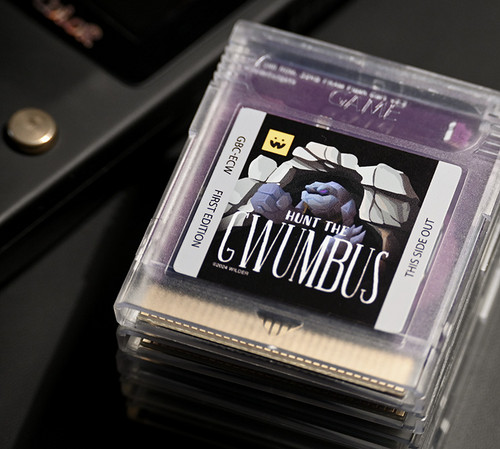
It was the early 1980’s when my father had gotten us our first family computer, a TI-99/4 from Texas Instruments. My siblings and I spent hours tinkering with it, coding in BASIC, and playing video games until the machine would begin to glitch from over heating. Then we’d run around outdoors until the TI-99/A cooled off, and we’d start the process over again.
Parsec, Blasto, Moonsweeper, The Attack, and TI Invaders are some of the games I recall. Another was an adaptation of a 70’s text based adventure developed by Gregory Yob, Hunt The Wumpus. Though the mechanics for the original and the TI-99/A version are different, the premise of each are the same: navigate a maze of dark caves hunting a beast called the Wumpus, while avoiding pitfalls and super-bats. Clues are given as to where each of these items are located as you feel your way around the maze. If the player believes they have enough information as to which cave the Wumpus might reside in, they can shoot the Wumpus with an arrow from an adjacent cave. Miss the shot and the player risks loosing their life. Run into the Wumpus, the player is eaten. Game over.
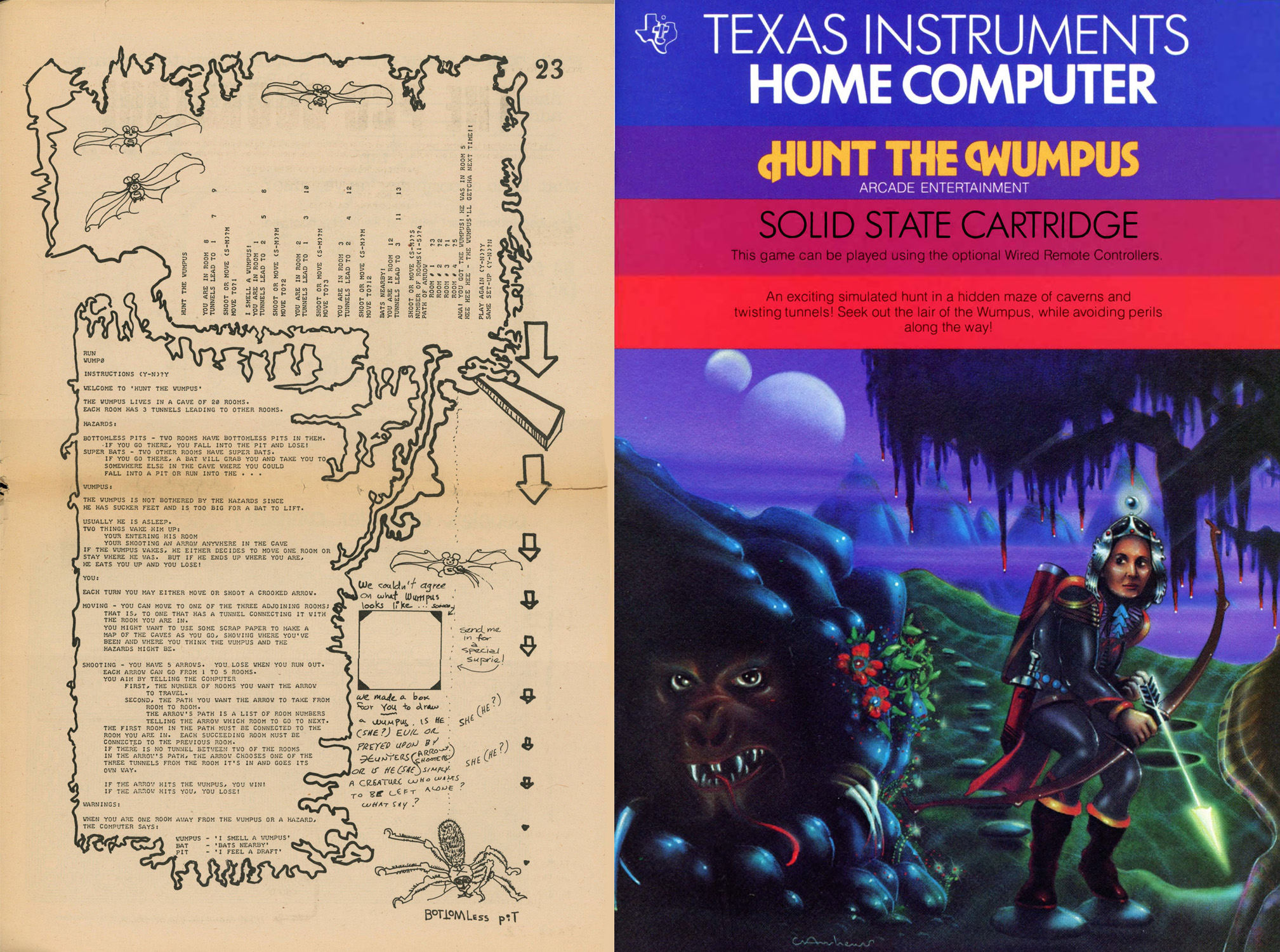
Over a year ago I took a look at developing my own version of Hunt The Wumpus for the Game Boy Color, inspired by the TI-99/A adaptation. How did that turn out? Long story short, I failed. I could go on about the gameplay of the TI 99/4 version and how I unsuccessfully attempted to translate it, but this is not an article about that attempt. What’s important to know is that I failed, and what I learned in that failure. The game moved too fast.
It was months later when one evening a deep dive down the rabbit hole on BASIC coding I had stumbled across the original text based version of the game. I began to rethink my approach: Recreate the slower-paced text-based version, and layer upon that.
The original Wumpus is set in a maze of 20 interconnected caves. Each cave connected to 3 other caves. All together, these caves combine to form a dodecahedron. Need a visual? Think of a 12 sided die, also known as a D12. A D12 has 12 pentagonal sides, 20 vertices, and 30 edges. Each vertex represents a cave. Each edge, a pathway between caves.
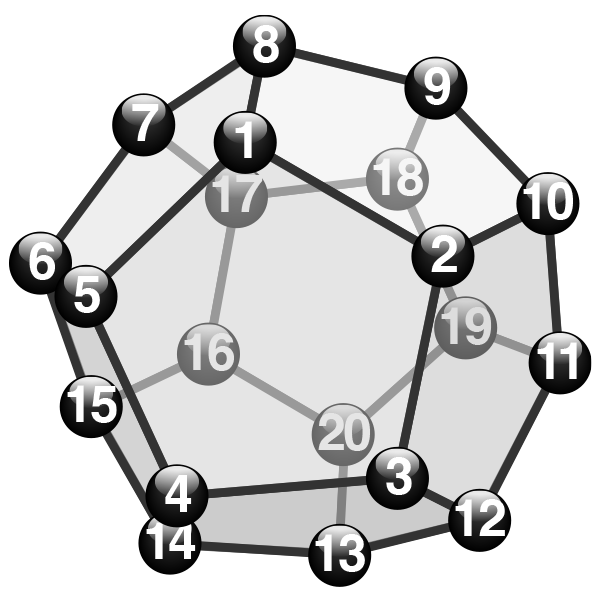
Hunt The Wumpus begins with the player’s starting point, Wumpus, two super-bats, and two bottomless pits all receiving a cave number assignment at random. With each new game, a new combination of assignments for each element is initiated.
The super-bats and pits are additional hazards the player seeks to avoid on the hunt. If the player enters a cave assigned to a pit, they fall to their death. If a player encounters a cave assigned to a super-bat, they are carried off to another cave at random.
As the player moves about there are clues to the location of the other elements. If a player enters a cave adjacent the super-bat they are notified that they hear its wings flapping. If a player is in a cave next to a pit, they are told they feel a draft. If the player is in a cave that is two rooms away from the cave assigned to the Wumpus a notification is given that they can smell their prey.
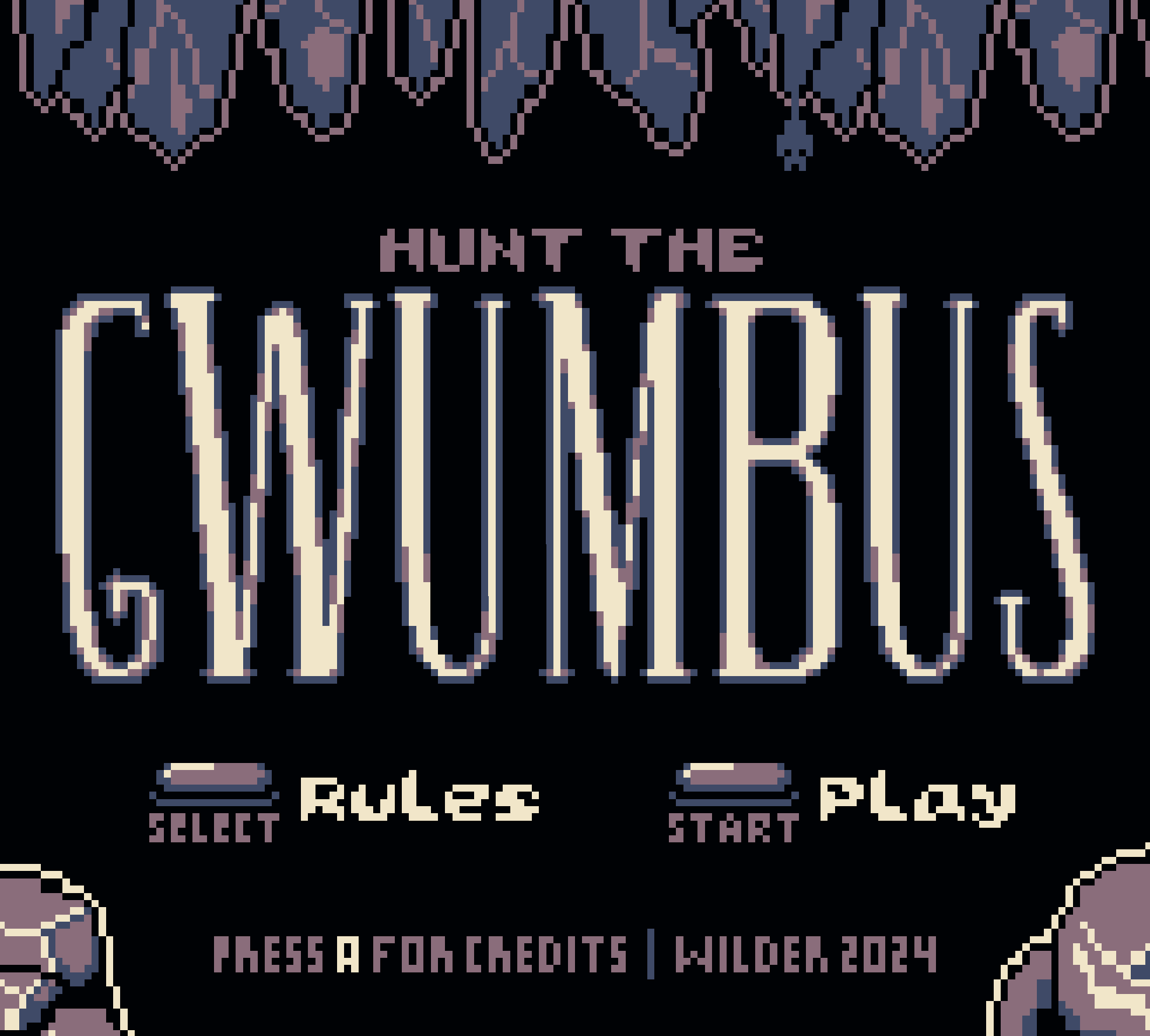
I began this new iteration which I have named Hunt The Gwumbus (incorporating a G and B into the name for somewhat obvious reasons,) by setting out the playing field on the pasteboard in GB Studio. A dodecahedron splayed in two dimensions resembles a small inverted pentagon surrounded by a decagon, that is all encompassed by a larger pentagon. At each imagined vertex I set a play-screen. Each play-screen was then labeled a cave number (1-20.)
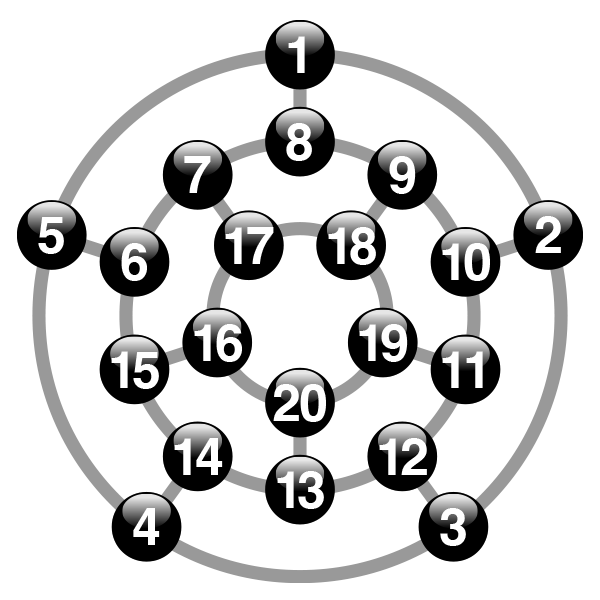
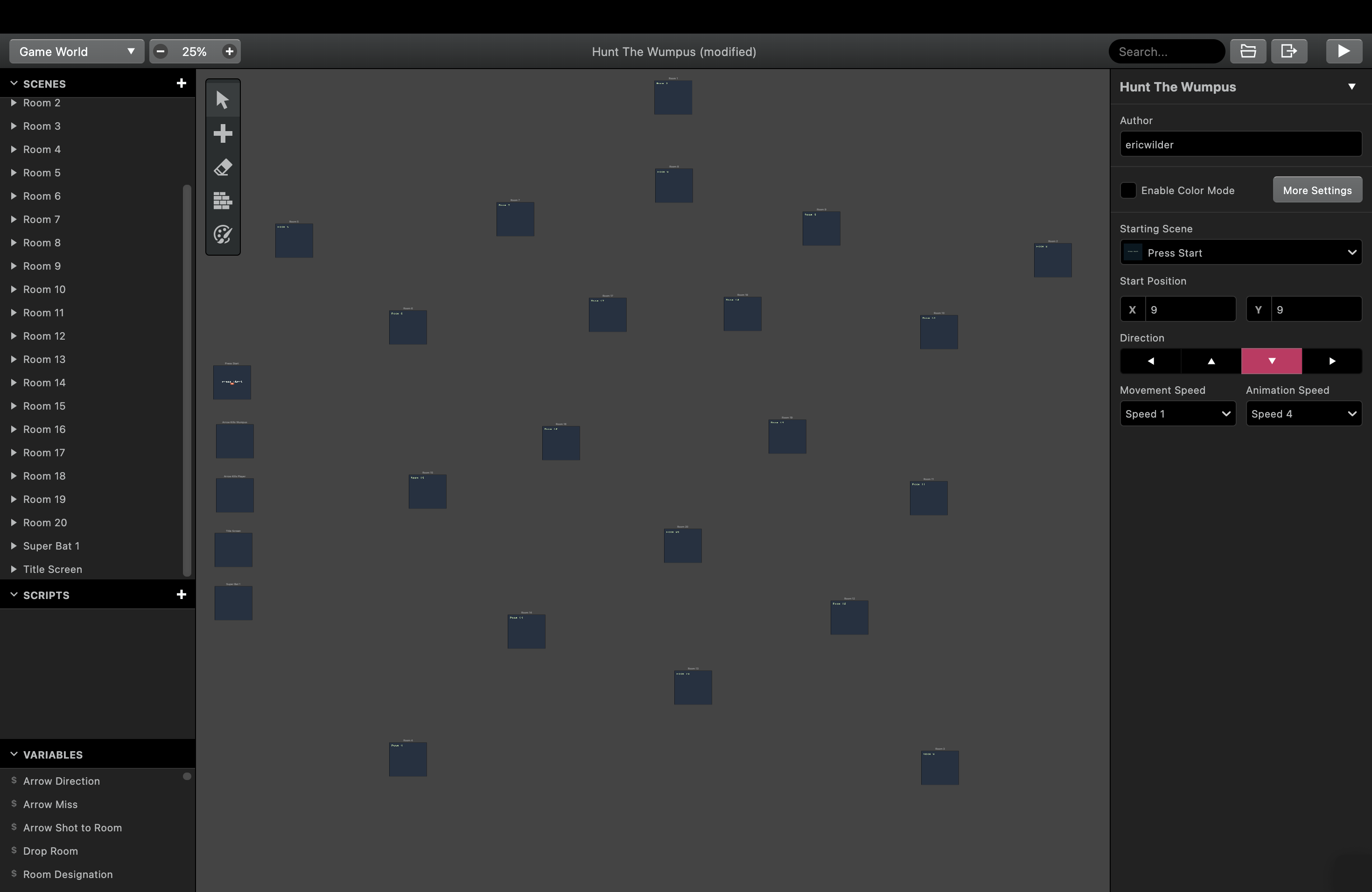
Once cave numbers were labeled corresponding locations to the elements of the game could now be randomly assigned. As a personal preference I felt the use of only one super-bat and one pit gave the game better fluidity within the Game Boy Color environment. An initial screen generates random cave assignments for the Gwumbus, super-bat, pit, and starting location of the player. A few mathematical functions insure that critical assignments aren’t duplicated.
As for movement around the environment, in my first draft I left it to the original text based functions. Players had the option of moving to an adjacent room via multiple choice. For Example, if a player was located in Cave 8 they were given the option of then entering Cave 1, Cave 7, or Cave 9. (This presented an issue visually because I instinctually wanted to represent these options in numerical order, 1-7-9. Having these choices presented like this in gameplay the player would likely assume that Cave 1 is ‘to the left’ and Cave 7 is ‘in the center,’ and Cave 9 is ‘to the right.’ However, if you view the cave diagram you can see this is not exactly the case. I will address this later.)
Movement established, there were two more actions to account for, detecting (both prey and hazards,) and shooting the arrow. As mentioned before, the text based version came up with a clever environmental awareness for alerting the player to elements of the game, relying on senses other than sight. This could be better emphasized in the Game Boy Color environment. In a toolbar at the the top of the play-screen, along with the cave assignment, there are visual indications signifying the smell of prey (represented by a skull) and a cavernous draft of the pit (represented by wavy lines). The flap of the super-bat’s wings can be heard in the ambient noise of an adjoining cave when nearby.
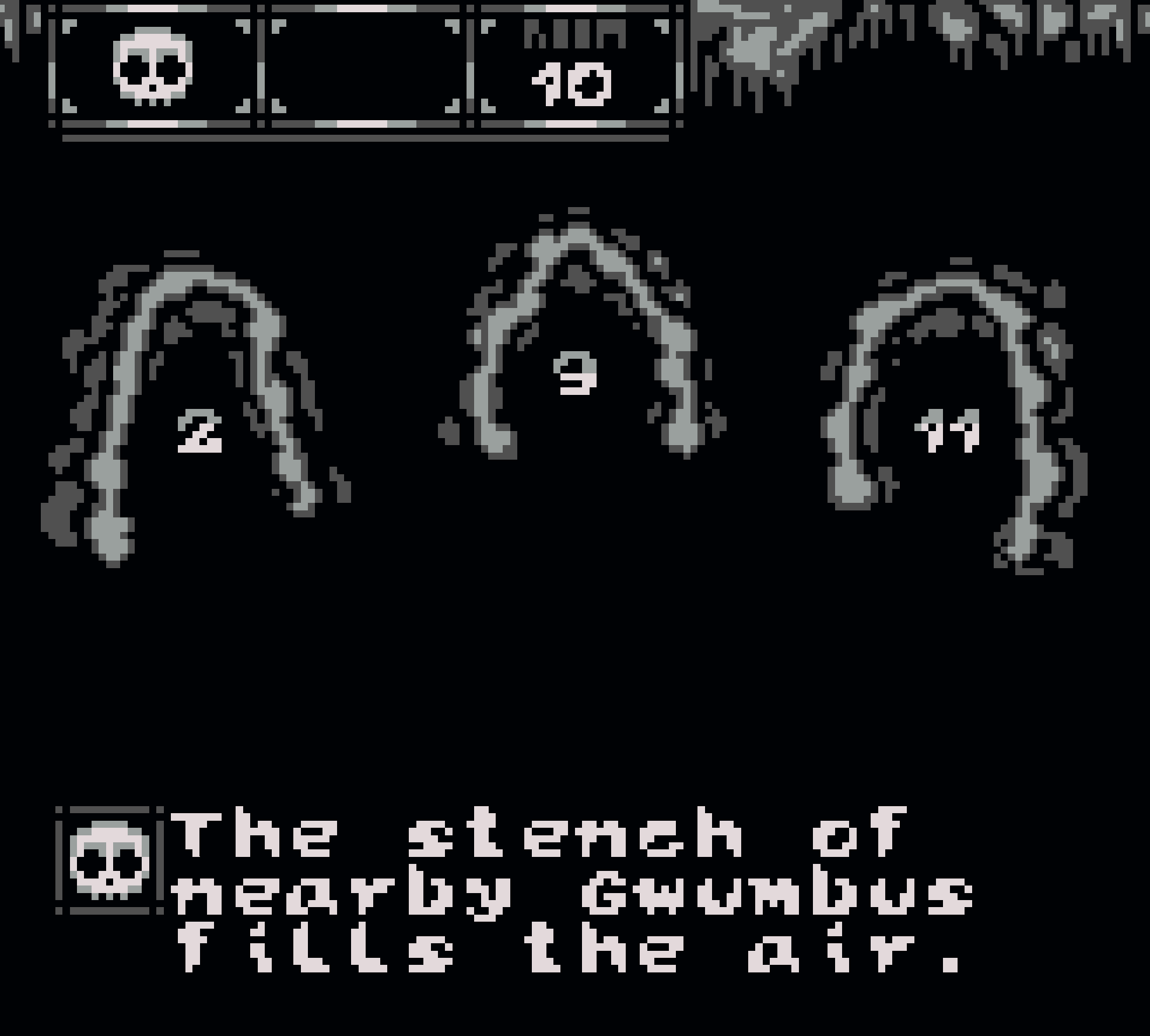
In the original Wumpus shooting was one of two options immediately given upon entering each cave that players had to enter into the command line (the other, moving). In the TI-99/4 version of my youth, players had to manually switch between movement and shooting modes. For this version I had started with a multiple choice, ‘Shoot’ or ‘Move,’ upon entering each cave, to very quickly adapting the ability to alternate between a Move/Shoot mode with a button press. Breaking away from the multiple choice leanings of the original to the more intuitive use of D-Pad and A and B Buttons, I felt that this could possibly be a decent translation to the Game Boy Color. Entering each new room the player now either pressed a direction on the D-Pad corresponding to an adjacent cave (Up, Left, or Right) or pressed B to switch to Shoot mode and use the same corresponding D-Pad inputs to launch an arrow into one of the three other caves.
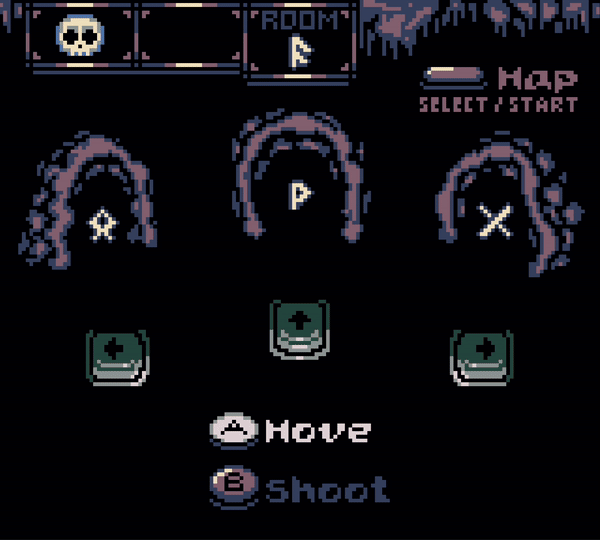
As with the original, there are consequences for firing each arrow to prevent the player from going on a shooting spree (and consequently slow the game down. Good pacing being essential, as learned from my first failed development.) In Hunt the Gwumbus each arrow missed has a chance of rebounding in the darkness and hitting the player, resulting in death. It’s best to be sure when taking aim.
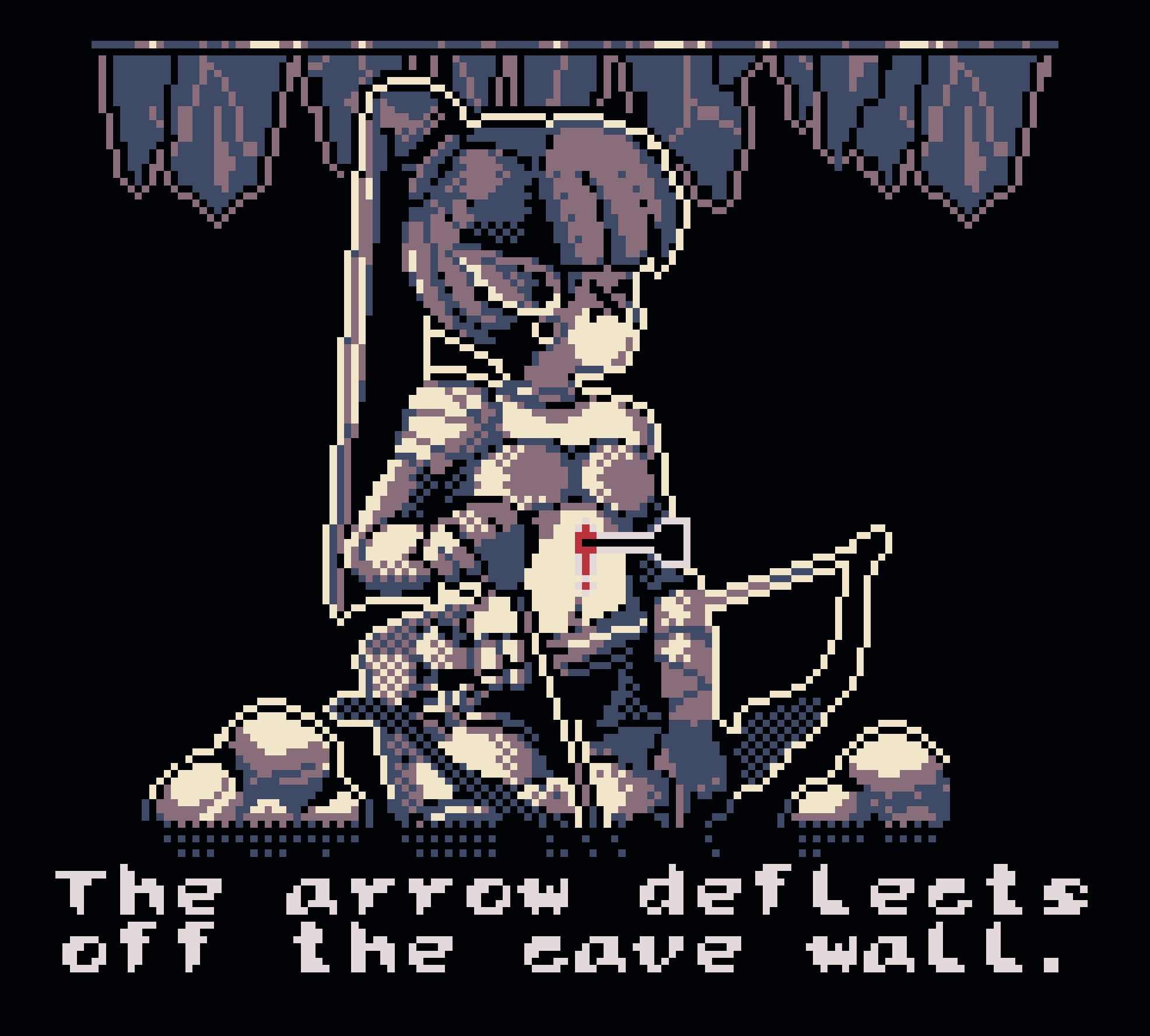
Gwumbus took on a life of its own from here. Players are challenged in three different levels of difficulty: ’Normal,’ ‘Tougher’ and ‘Dang It!’ Music, sounds (including voiced dialog,) artwork, and animations have been added. A change in backstory where the Gwumbus is born of lava and has a thick skin resembling rock, and reeks of sulfur from two caves away. The super-bat has been replaced with a harpy to push a more fantastical feel. A Win/Loss tally is kept during consecutive rounds of play. In the original if you wanted to keep track of your movement and the detection of elements, you would have needed to keep a pencil and paper handy. In Gwumbus press Select and the player can navigate a map detailing location, rooms visited, and imminent threats.

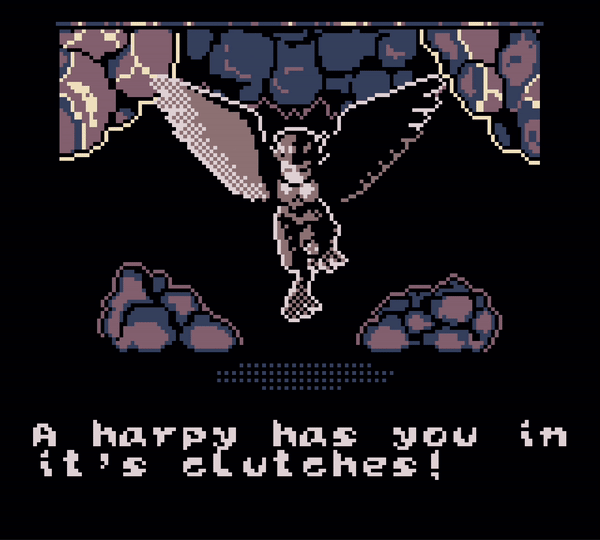
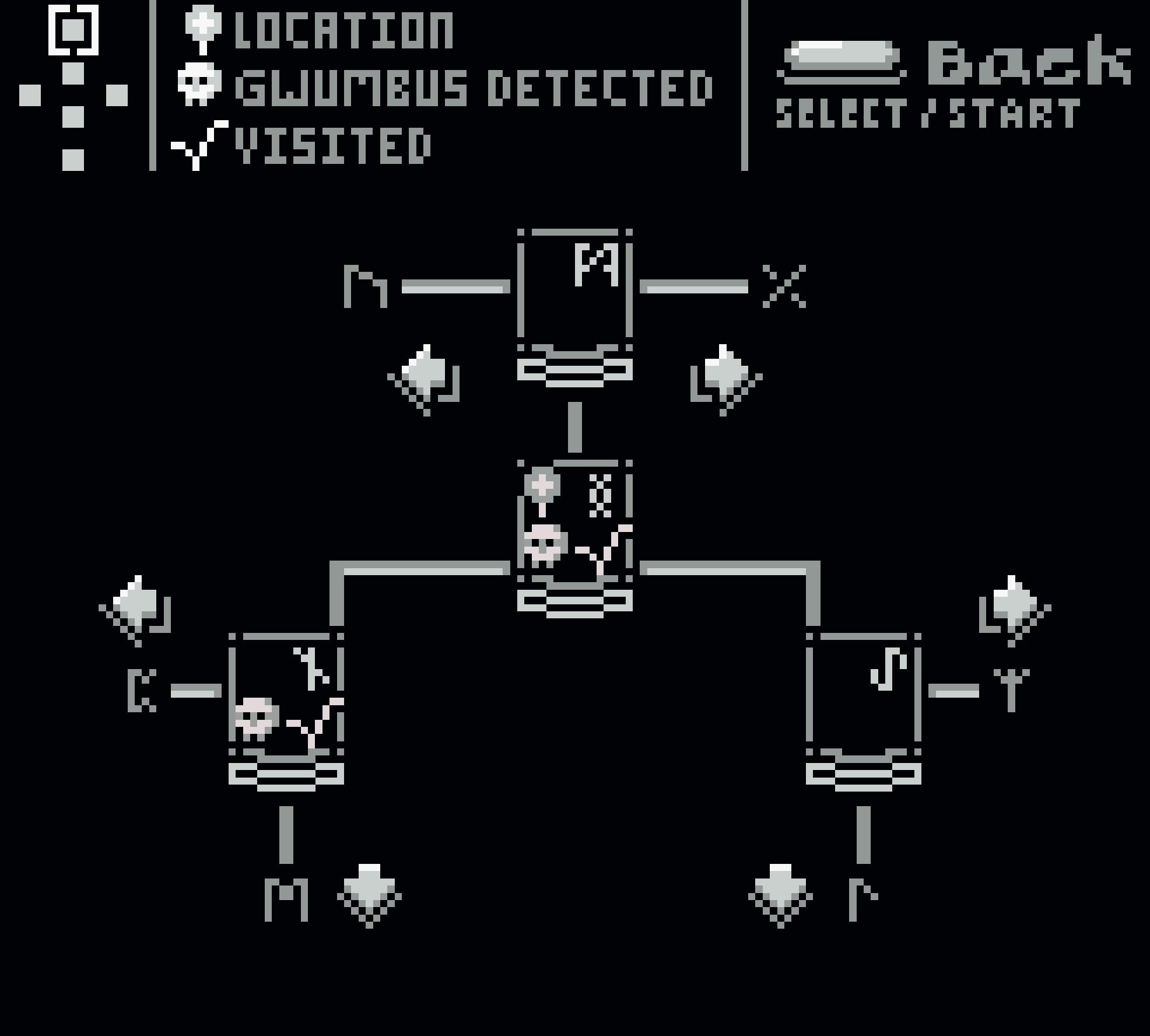
Navigation of the game being completely changed with the aid of a map and D-Pad movement, the issue with presenting caves in numeric order versus directional order could be resolved. No longer would players need to recall numbers from notes or memory, each cave could be labeled using any method imagined. This also meant caves could be presented in directional order without confusion. Going back to the previous example: In designating caves numerically, if a player was located in Cave 8 they would have the options of moving (or shooting into) caves 1, 7, or 9. Referring to the splayed dodecahedron diagram, Cave 9 is to the right, cave 7 to the left, and 1 is up. Presented numeric order: 1, 7, 9. Directional 7, 1, 9. Confusing? Let’s free this up by getting rid of our alpha-numeric tendencies, and choose something more ‘fantasy.’ Let’s use actual runes (hat tip to a friend for suggesting this!) If we say Cave 1 is Mannaz, 2 Gebo, 5 Uruz, and 8 Ingwaz, we could now arrange our options in directional order and not get hung up on numeric implications!
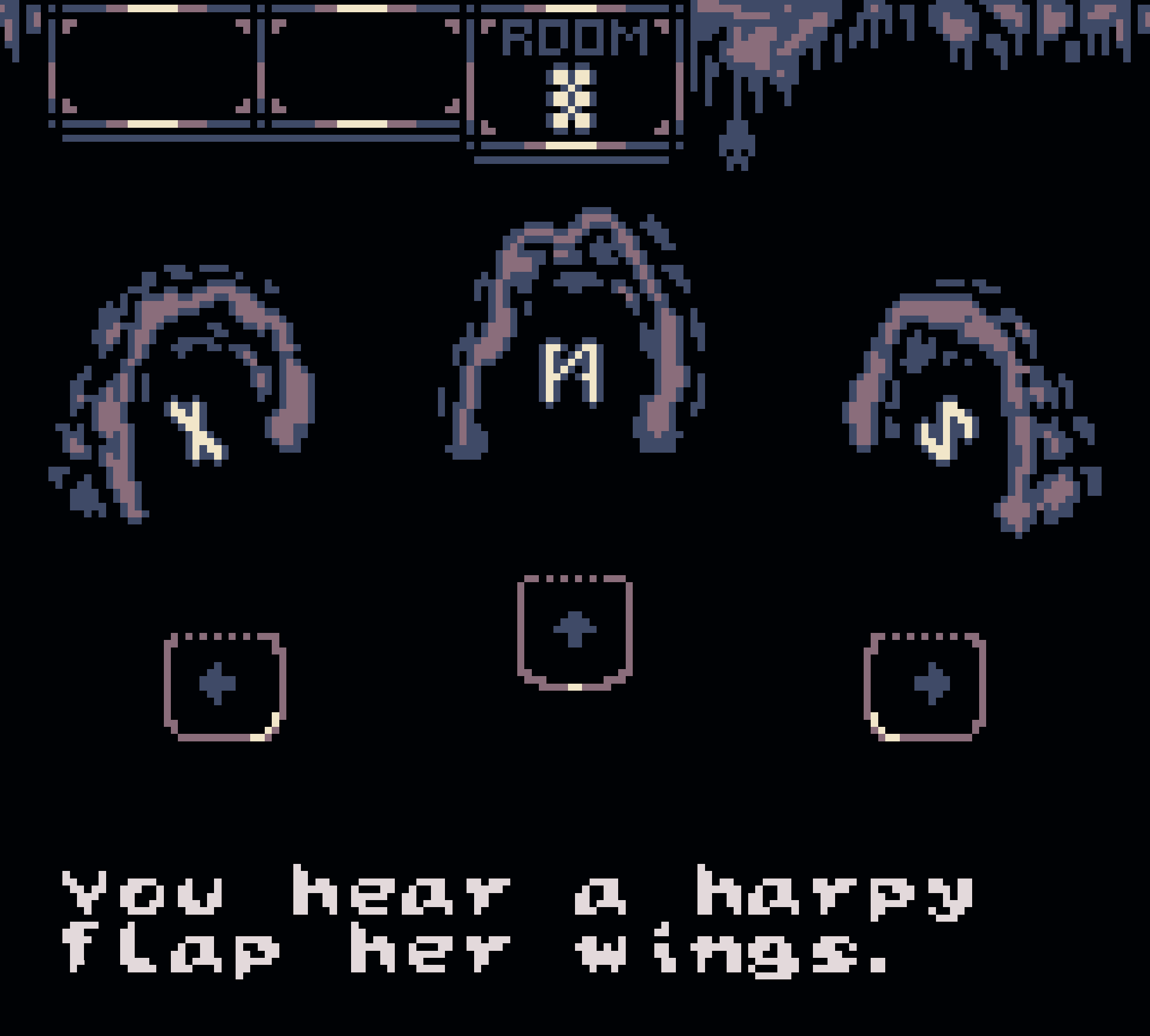
I’m thinking my much younger self would be very pleased with this new take on the old classic. Hunt the Gwumbus has all the pacing and tension of the original, yet takes advantage of the strengths of the Game Boy Color. And I’ve never had the misfortune of playing the handheld so much that it overheated (so far!)

Get Hunt The Gwumbus
Hunt The Gwumbus
Avoid pitfalls. Evade capture… Hunt the Gwumbus!
| Status | In development |
| Author | Wilder |
| Genre | Puzzle, Adventure |
| Tags | 8-Bit, analog-pocket, Game Boy, gameboy-color, Game Boy ROM, hunt, Monsters, Retro |
More posts
- Gwumbus GB DMG/Pocket Edition Now AvailableJan 06, 2025
- Now Available as a Physical CartridgeJul 02, 2024
- Finished!Feb 21, 2024
- Improved MovementFeb 10, 2024
- Gwumbus Updated to Include Game LevelsFeb 05, 2024
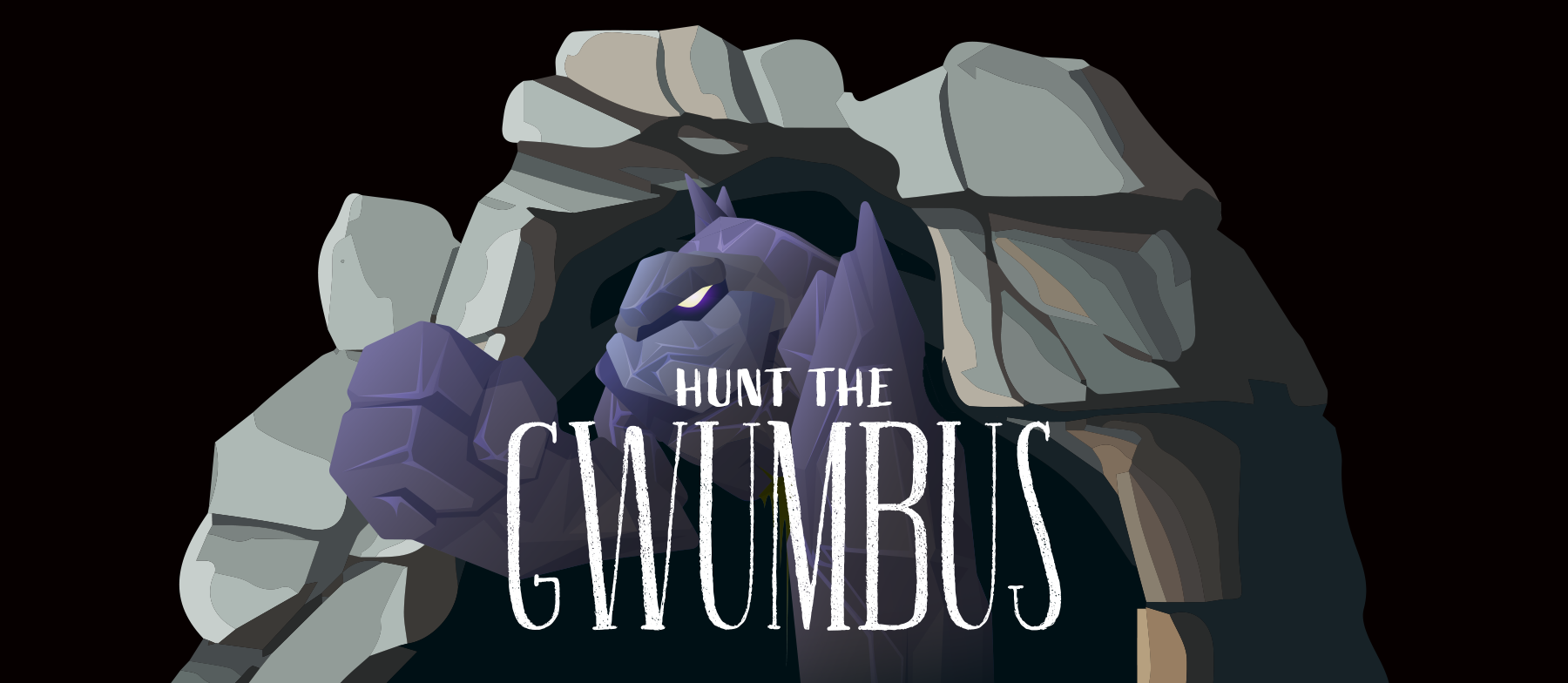
Leave a comment
Log in with itch.io to leave a comment.